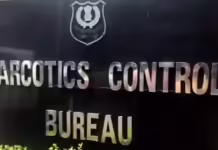NEW DELHI: The recent Ahmedabad AI-171 crash was not a bolt from the blue. The crash of the Air India aircraft that killed 280 people, including crew members, was waiting to happen. It was the grim culmination of warnings the Directorate General of Civil Aviation (DGCA) itself had recorded year after year—and then did nothing about.
Between 2018 and 2023, the DGCA published six consecutive surveillance reports, each more alarming than the last. They were not private memos. They were official, public documents—uploaded to the regulator’s own website. And they laid bare a picture of mounting decay across India’s airlines, airports, training academies, and maintenance units.
These reports show a civil aviation regulator witnessing—and tolerating—the normalization of falsification, decay, corner-cutting, and defiance of basic aviation norms. Despite these shocking disclosures, no airline was publicly named. No penalty was announced. No systemic enforcement followed. And after 2023, the DGCA simply stopped publishing safety audits.
The Sunday Guardian went through these documents, and what follows is a chronicle of those six years—a record of how India’s civil aviation safety net was allowed to rot in plain sight. The newspaper reached out to the DGCA for a response. None was shared.
In 2018, inspectors found that “maintenance inspection has been carried out on Airbus A230-271N (PW1127G-JM engines) aircraft at Airport Line stations without obtaining specific approval.” Aircraft were operating with “installed propellers without proper release certificate i.e. CA-Form1.” AMEs (Aircraft Maintenance Engineers) “carried out the task without the use of necessary tools and spares.” FOD (Foreign Object Debris) elimination programs were “found to be not effective.” Examination sanctity at training institutes was “unsatisfactory.” Aircraft were flying “without placarding of cockpit as per MEL (Minimum Equipment List) maintenance action,” and “tools [were] not being returned to the tool store at the end of each work day.” One certifying AME was posted at a station “to service daily flights, without giving due considerations to human factor issues.”
In 2019, DGCA inspectors observed “ground lock sleeve found engaged in the Lock Stay
Actuator MLG (Main Landing Gear) without the ‘Safety Pin’” and “performance of maintenance w.r.t. power plant desalination wash… carried out by a single engineer on both engines on same day.” Engineers used “locally manufactured” circuit breaker collars, issued tools “without calibration correction card,” and carried out “defect rectification… without the use of work order and appropriate maintenance data.” A certifying engineer “deployed the LH (Left Hand) over wing exit door slide” without proper training. CAM (Continuing Airworthiness Manager) did not approve inspection schedules. AMOs (Approved Maintenance Organizations) issued “authorizations [that] do not indicate the work limitation.” Slide deployments, untrained auditors, and unauthorized changes in design assurance systems were all recorded. BA (Breath Analyzer) test forms were not completed by medical officers.
By 2020, DGCA found that “maintenance personnel submitted personal Logbook with false entries… for obtaining certification authorization privilege.” Fuel area protector kits were certified despite “equipment… not installed on the same.” “Unsalvageable spares were not quarantined or mutilated.” The operator “was not in possession of ADs (Airworthiness Directives) / SBs (Service Bulletins)” and had “no formal subscription with OEMs (Original Equipment Manufacturers).” “Occurrence Reporting System… was found not established.” One AME “certified… annual inspection of fuel area protector kit… however, the equipment… was not installed.” Surveillance found “no hazard identification, safety risk assessment and mitigation” under SMS (Safety Management System) and that “root cause analysis and preventive action for internal findings” was not being done.
In 2021, engineers “signed off task cards… but no evidence found for this task being carried out.” Ground runs were “carried out without carrying out independent inspections of all engine controls.” The “emergency door damper cylinder pressure [was] found low.” Aircraft main wheels showed “deep worn-out patch.” Instructors were issuing each other’s authorizations. Bonded stores had “expired life vests,” “unserviceable and serviceable materials [were] found in same room,” and “store charge [was] not authorized by quality department.” “Training records of many… Certifying and Non-certifying staff… were not available.” There was “no control of competence” of certifying staff. The tool issue register had “many entries not done,” and the bonded stores held “expired consumables.” In the tool room, “OJT (On-the-Job Training) trainee students were… monitoring.” Consumables were stored “in a baggage trolley without ventilation and found stored directly in the sunlight.” “AME had been given authorization without having endorsement of the aircraft.”
The 2022 report began with an engine “found with accumulation of oil… inside the exhaust duct.” A “blocked APU (Auxiliary Power Unit) drain duct” and “nose wheel tire tread… worn out with no visible treads” were recorded. Fuel overflows “spread across the wing surface” and refueller circuit leaks were noted. Garmin Display Units “were cannibalized/replaced… without any work order.” Safety-critical inspections were carried out “without utilizing bearing wear gauge tool or any other OEM recommended equivalent.” Emergency kits were either missing or expired. Training records of technicians were “not found.” “Store inspectors [were] not trained.” Quality audits were not carried out. “Continuing Airworthiness Management Organisation (CAMO) has not been issuing work order for all AMP (Aircraft Maintenance Program) defined works.” Expired items were “found in the store.” There was “no fire drill record” and “segregation of unsalvageable/scrap items was not done properly.” Reliability meetings were “not conducted quarterly and on timely basis.” CAMO post-holders were absent and the AMP was not amended as per latest revisions. Engineers held “dual authorization by two different organization without any limitations or scope of work.”
The 2023 report was the most damning of all. DGCA recorded “traces of oil… on nose landing gear wheel well area,” “radome paint… peeled off at many places,” and “scheduled maintenance… carried out at unapproved locations.” “Beacon light of the GPU (Ground Power Unit) was found not working.” Completed work orders from contracted maintenance agencies were “not verified for proper closure.” Refuelling procedures were skipped. The “close circuit sampler fitted in the refueller… [was] leaking” and “quantity gauge… does not bear any gauge marking.” “Emergency signage was broken,” “fire exits jammed,” and “wildlife survey periodicity not followed.” “Insulation Resistance of Runway and Approach Lighting circuits for CAT II and III operations [was] below 1 MΩ.” “Rubber deposit at touchdown zone of runway caused reduction in friction value below maintenance levels.” “Aircraft defect logs [were] not updated,” and “repeat defects [were] not investigated.” “Reliability cell monitoring regarding repeat defects was found improper.” Stores had “no proper requisition system,” “tools available in tool box were not matching with the master tool list,” and “no separate monitoring system of EDTO (Extended Diversion Time Operations) significant systems’ components.” DGCA stated: “The Safety Review Committee (SRC) meeting was found overdue” and “the Safety Management System Manual was not approved and there was no Safety Manager in the Organisation.”
Since August 2023, the DGCA has not uploaded a single incident report. Its accident report page ends in 2023. Its aircraft accident summary—last published in 2011—is over a decade outdated. And the airlines? They continue to delay, overbook, and cancel—often for technical reasons that echo the same problems DGCA flagged six years in a row.
This is not regulatory failure. It is regulatory surrender and Indian passengers are paying the price. The fatal Ahmedabad crash has finally torn the veil. But it should never have come to this. If this does not change—with full transparency, penalties, independent enforcement, and structural reform—then the next crash will not be a surprise. It will be a sequel.








